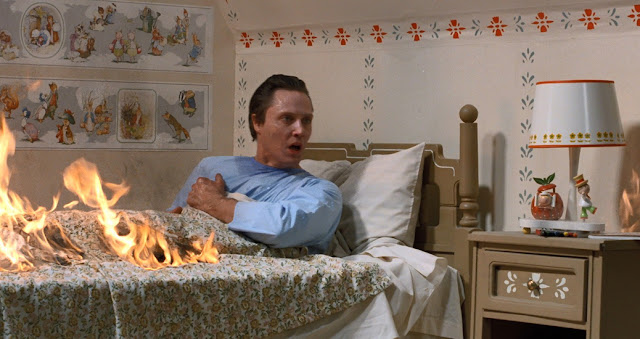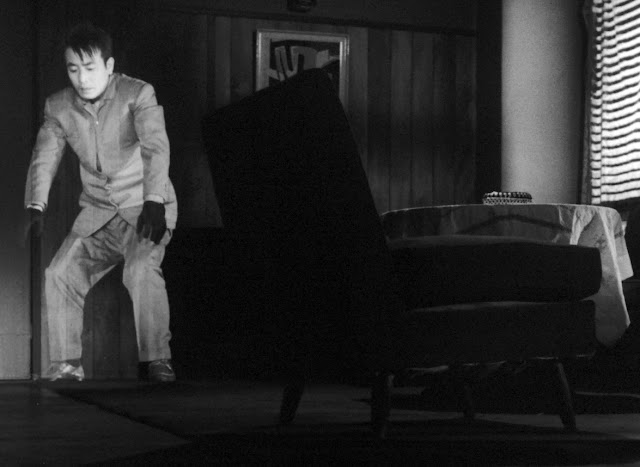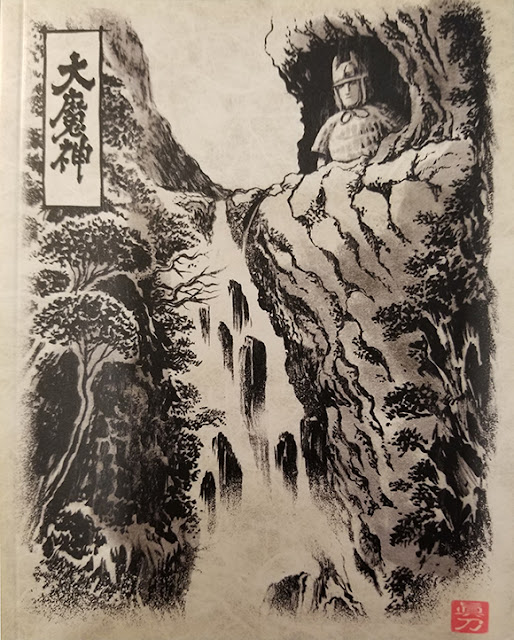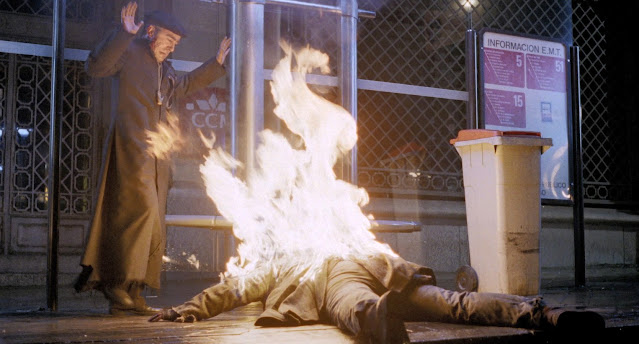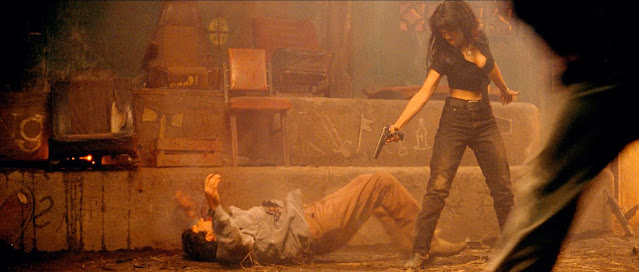Today’s special guest for a discussion of the devastating and illuminating Japanese documentary Okinawa supai senshi (Boy Soldiers: The Secret War in Okinawa) is Professor Kirsten Ziomek, Associate Professor of History at Adelphi University, and the author of Lost Histories: Recovering the Lives of Japan’s Colonial Peoples (Harvard Asia Center, 2019), a pathbreaking study of the ways the Japanese empire’s colonized population— mainly Okinawans, Ainu, Indigenous Taiwanese and Micronesians— interacted with the metropole, astonishingly rich in detail and deeply challenging to today’s complacent notions of how the Japanese colonial empire actually worked. Her current book project is tentatively entitled The Disorder of Killing in the Pacific War: the Colonial Soldiers, Laborers and Local Peoples at the Japanese Empire’s Edge, in which she seeks to examine the lives and experiences of the colonized and indigenous peoples during the Pacific War. This new book promises to be as powerful and upsetting to the status quo as her first, moving beyond the categorizations of the colonized and indigenous peoples as monochromatic victims or those who “joined the system” to become Japanese nationals.
This interview was conducted in August 2, 2021 through Zoom. It has been edited and somewhat shortened for clarity and economy. The contents of this interview are copyrighted to Professors Kirsten Ziomek and Kyu Hyun Kim. Any reproduction of the contents therein without the explicit written consent of Professor Ziomek will be considered a breach of copyright laws as defined by the United States court system. “K” refers to Kyu Hyun Kim and “Z” refers to Kirsten Ziomek in the following interview text.
K: So
grateful that you could join me today! To start off, could you tell me how you
had come to hear about this documentary and your interest in the subject
matter?
Z: I am writing a book, one of the chapters of which explores “spies” in wartime Okinawa. The more research I conducted, the more I have come to realize that these stories of Okinawans being subject to suspicion as spies by the Japanese military and executed are actually much more complex than previously thought, including a disturbing dimension of Okinawan civilian complicity in scapegoating or blaming fellow residents as spies. The rest of the chapter deals with the gokyōtai, the Okinawan youth who were mobilized to conduct guerilla warfare against the Americans, as “spies” by infiltrating enemy lines. So not surprisingly, this film was extremely interesting and illuminating for me. For one, I had visited Iriomote and Ishigaki islands a long time ago, but I was then unaware of the terrible histories of relocation and violence told in the film. It was really shocking and powerful to listen to the testimonies of the survivors who had been children during this time, including that of Mr. Kudaka whose mother went insane after losing her son, a member of the gokyōtai (executed by Japanese officers), and his frank admission that he did not necessarily want his brother back but wanted his mother restored to normalcy.
K: The film
draws upon two interrelated but distinct strands of discourses, one a more
familiar anti-war message and another that specifically focuses on the
sufferings of the Okinawans by the Yamatonchū or the “mainlanders (hondojin).”
Do you feel these two strands are well integrated in the film?
Z: I feel that the first strand is always there, but whenever we deal with the modern history of Okinawa the question of colonialism is unavoidable. I cannot help but wonder if the Japanese wartime government would have treated the mainlanders the same way they had done with Okinawans as described in this film, for instance, forcibly and knowingly relocating a population of one island to a malaria-infested location just for strategic reasons. The directors’ main contribution to the discussion about the Japanese military’s treatment of Okinawan civilians during the Battle of Okinawa is to contend that how the Okinawans were treated- executed for being suspected “spies”- would have happened to Japanese civilians if fighting came to the mainland. Previous scholars have usually discussed the spy executions vis a vis the lens of colonialism; that is to say because Okinawans were seen as “others” they were viewed with suspicion, thus their mistreatment by the Japanese military. This film offers a different view, namely it was the military-civilian dynamic that took precedence over the fact that the civilians were Okinawan. It complicates the issue for sure, and I am torn whether what happened in Okinawa really could have been replicated on the mainland, as the filmmakers contend.
K: Indeed. I
was too surprised to see a direct acknowledgement in the film of the fact that
the Japanese military had never really sought to “protect” civilians, that they
really did not care how many ordinary Japanese citizens ended up dying in the
course of protecting the emperor and the “national body.” This point is somehow
not clearly conveyed in some of the more conventionally pacifist, anti-war
films made in Japan.
Z: I am looking at the Japanese military mobilization of the native population in New Guinea in my new book, and historically I could chart the relationship between the occupying Japanese and the native population that had begun at least with the stated intent of friendly cooperation and progressively deteriorated into something abjectly cruel and exploitative as conditions of war worsened. And again, this narrative reminded me of the Okinawan experience since it seemed so opposite. Namely, there was no pretense of civilian protection in Okinawa. In some respects, the Japanese military treated their own compatriots in Okinawa on par with or worse than how they treated foreign populations they forcibly occupied during the war.
K: In my
research on the Japanese wartime mobilization of Koreans, I have come across
time and again the characterization of Koreans by the colonial state and the
Tokyo headquarters as “human resources” (jinteki shigen). Equally
disturbing is the fact that this view of regarding its own population as resources
has been squarely adopted and even flourishing in today’s East Asian nations— China,
North and South Korea, Japan.
Z: Yes, and there is almost a kind of pointlessness built into the whole mentality behind seeing the population as exploitable resources. Exploit them towards what ends? The answer the film provides-civilians were utilized in order to protect the nation’s power hierarchy is unsatisfying. Were soldiers so devoted to the emperor that they unquestionably saw civilians as resources to be utilized and disposed of as they saw fit? It is often told that when Japanese soldiers died they called for their mothers and did not say the emperor’s name. It is hard to believe this cruel attitude toward civilians was so simplistically conveyed and embraced. My previous research has found bonds of friendship between Okinawans and Japanese soldiers- not enough to combat the view of the Japanese military as aggressive perpetrators, but enough to question if it is historically accurate to view the Japanese military with having such a single-minded and unified aim that could be executed during the war. I wonder to what extent the treatment of Okinawans during the war was due to the circumstances of war and how much it was due to specific military orders. The flimmakers want us to believe it was only the latter, but I am not certain.
K: I have
also not seen in any other film the argument against operations of the
Self-Defense Forces in Okinawa presented in this one, that the latter will not
protect the Okinawan population against an external threat, whether it is
China, North Korea, or whichever “enemy,” because that is not what they are set
up to do. Do you feel that the filmmakers are attempting to expand the scope from
the Okinawan experience to address the larger issues of Japanese geopolitics
and do you think the attempt was successful?
Z: I think
they are attempting to link what happened during the Battle of Okinawa to
present day Okinawa with the SDF bases but they talk about the SDF bases
without mention of American bases. The situation in Okinawa is obviously very
complicated. Their attempt to link what happened to Okinawans during WWII to
Japan’s current geopolitical position (Japan being an outpost of American
empire) I think was halfhearted and not satisfying. That being said, I still
think this film is very much an Okinawan story. The Okinawans I have
encountered, from academics to cab drivers, continued to make a distinction
between Uchinānchū (Okinawan natives) and Yamatonchū. The Nagano
School agents sent to Okinawa were able to draw upon the ambivalent and complex
relationships between Okinawans and Japanese in order to mobilize the youth as
soldiers. This film made me think of Matthew
Allen’s “Wolves at the Back Door” (See references) where he describes a group
of civilians, including some Koreans, who resided on Kumejima island and were
killed in August 1945, after the war had officially been terminated, by a group
of Japanese soldiers who had suspected the former of “working with the enemy.”
The commanding officer, a man named Kayama Tadashi, survived well into the
postwar period. In media interviews he
was completely unrepentant, assuming the attitude of “we did what had to be done.”
While the Kumejima massacre is one of the most well-known cases of Okinawans
being executed as spies, the filmmakers do not discuss this event. Instead they
offer many examples of how and why Okinawans were executed as spies including how
Okinawan civilians worked to root out other Okinawans as “spies.”
K:
Unfortunately, I have seen this kind of dehumanization of the “local population
as enemies” more than once when I was growing up in South Korea. There was, for
instance, a military training instructor at my junior high school, a Viet Nam
War veteran who used to reminisce with relish about his killing of “Viet
Congs.”
Z: Yes, and I keep coming back to this terrible fact that all these horrors are known to us today because the eyewitnesses had experienced them as children.
K: I am
conflicted about the pacifist messages prevalent in the postwar Japanese
culture, many of which seem to be predicated on two premises: that the postwar
Japan is so different from the prewar Japan that it will never engage in a
similar type of behavior regarding its “outside” population or its own
citizens, and that the Japanese people in general are exempt from “war
responsibility,” however the “bad apples” responsible for the war might be
defined. I am in principle sympathetic
to these pacifist sentiments and ideas but as a historian I cannot help feel
that they miss out important stories and experiences as well as the broader
picture of the Japanese empire.
Z: I wholeheartedly agree. The film we are discussing certainly locates a significant piece that fits into the larger puzzle picture constituting the war experience for Asians. Having said that, it should remain a constant struggle for historians like us, journalists, artists and ordinary citizens, too, to try to find other equally relevant puzzle pieces and at the same time not to lose sight of the whole picture.
K: Any
aspect of the present documentary that you had questions about, or any subject
matter that you feel could have been covered in greater depth or detail?
Z: The relocation of the Hateruma island residents, for one, could have fleshed out more from my historian’s point of view, and there are other instances where I felt more corroborating evidence would have been helpful. However, I understand that Mikami Chie has published her research in book form and I assume the book presumably answers some of my questions- I have not yet finished reading through it yet (see References). The stories about the Nakano School have been well researched. Stephen Mercado’s study (see References) deals with this institution but I was not aware that some 42 graduates were sent to Okinawa, a large number by any standard. The documentary also offered invaluable first hand testimony from former gyokyōtai, which Mercado’s study does not include.
K: This is
perhaps a sideline point but the parallel between Okinawa during the Pacific
War and Cheju [Jeju] island before and after the Korean War, as well as the
islanders’ postwar struggles with the wartime legacies and subsequent
militarization of the islands is quite striking.
Z: I have
heard about what happened after WWII at Cheju Island but can you tell me a bit
more about what you mean?
K: Hyôn Kirôn (1949-2020), for instance, has written a story about a Cheju diver who is promoted as an anti-Japanese nationalist heroine, but she herself remains conflicted about the relationship with the “mainlanders” and questions others seeing her in such a light. The imposition of the nationalist narrative, compounded by the Cold War dynamics, on the Cheju population tends to obscure the semi-colonial or internal colonial relationship the islanders had had with the rest of the Koreans.
K: I am,
then, not far off when I say you approve the current documentary for alerting
the viewers to certain important aspects of the Pacific War and Okinawan
experiences?
K: Thank you
so much for the insightful discussion! Let’s keep the discussion going about
these and other matters of common interest.
Z:
Absolutely!
References:
Allen, Matthew. “Wolves at the Back Door: Remembering the Kumejima Massacres,” in Laura Hein, Mark Selden, eds. Islands of Discontent: Okinawan Responses to Japanese and American Power (Lanham, MD: Rowman & Littlefield, 2003).
Mercado, Stephen. The Shadow Warriors of Nakano: A History of the Imperial Japanese Army’s Elite Intelligence School (Washington D.C.: Brassey’s Inc., 2003).
Mikami Chie. Shōgen Okinawa supai senshi (Tokyo: Shūeisha, 2020).
Ziomek,
Kirsten. Lost Histories: Recovering the Lives of Japan’s Colonial Peoples
(Cambridge, MA: Harvard Asia Center Publication, 2019). (For more information
see: www.kziomek.com)









